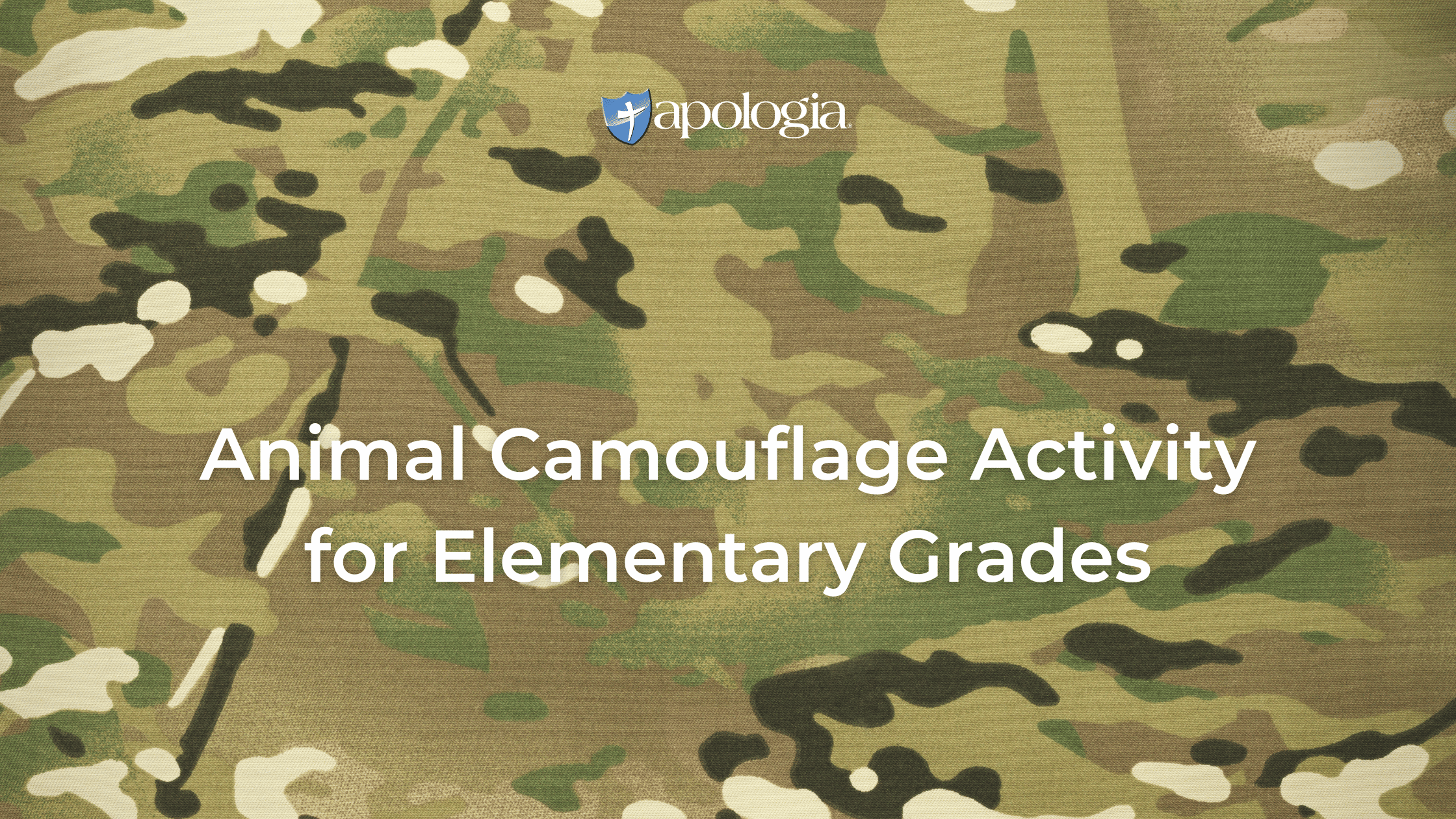
Animal Camouflage Activity for Elementary Grades
In Exploring Creation with Zoology 3: Land Animals of the Sixth Day, Jeannie Fulbright outlines an experiment to help demonstrate the effectiveness of God’s design for animal camouflage. Our family completed this fun animal camouflage activity, and the procedure and results are pictured below.
We followed the core experiment, then added a little twist after we discussed the initial results. My daughter’s second hypothesis (not shown on her notebooking page below) was that in a dimly lit room, fewer M & Ms would be found. The results surprised us!
Here is what we did . . .
We gathered the supplies, which included: a large bag of M & Ms, 7 sheets each of yellow, green, red, and orange construction paper, a laundry basket, a pencil, 3 sheets of white paper and our Land Animals Notebooking Journal.
First, we lined the bottom of the laundry basket with some extra sheets of yellow, green, red, and orange construction paper so that the bottom of the stark white basket became part of the animal camouflage.
Next, we tore each sheet of construction paper into 8 pieces (folded in half once, then again, then tore along the creases).
These torn pieces of construction paper were then loosely wadded up and tossed into the laundry basket.
When all the pieces were in the basket, we “stirred” them up for good measure. 14 pieces of each color M & M-red, orange, green, and yellow, were counted out and then scattered throughout the basket and we gave the basket a final shake.
We put 2 minutes on the timer and started the countdown. My daughter had 2 minutes to dig through the paper and find M & M’s. We talked about how she was the “predator” and the candy was her “prey”. How well were those M & Ms hiding?
At the end of 2 minutes, she divided the candies by color and counted what she had found.
She then had an idea. What if she was an animal hunting at dusk? How effective would animal camouflage be in this situation? When it was a little bit darker, would she still be able to find her prey as well as in the “daylight” (with the lights on overhead)?
She fluffed up the papers in the basket, scattered 14 more candies of each color into the basket, and gave it a final shake. We turned off the overhead light and closed the blinds in the room. With 2 minutes on the timer, she started hunting “at dusk.”
The number of candies found was counted and you can see the totals by color with the lights on (hunting in daylight) and with the lights off and blinds closed (hunting at dusk). Please note, I also had her practice calculating averages (There is always a way to add in a little more math and reinforce some of the basic skills!)
My daughter hypothesized that the yellow and green M & Ms would be easiest to find, as she thought those were more “nature” colors. However, the green count was the lowest in both instances. The biggest surprise was that she found 12% more candies at “dusk” than in “daylight”. We then discussed how God created man and animals to adjust their vision with the changing light—her eyesight adapted when the lighting was low, which allowed her to find just as many candies in the low light. Her completed Notebooking Journal page is below, along with a chart created to tabulate totals and averages. She is 11 and uses the regular Notebooking Journal. There is also a Junior Notebooking Journal for K-3
3 other tips to share:
- Keep science fun and memorable with hands-on activities. The texts and Notebooking Journals that accompany the Young Explorer’s Series present a wide range of activities to fit different learning styles and interests. If your child struggles with writing, have them draw what they did and what they observed in the experiment or ask them to dictate their responses to you. The focus should be on exploring ideas and learning about God’s Creation.
- Encourage your child to take an activity or experiment a step further. Ask them probing questions and if an ancillary experiment arises, follow that trail. (i.e. our lights on vs. lights off experiment) If this means an extra hour is spent on science, adjust the schedule–one of the advantages of homeschooling is allowing our children the time to explore their interests.
- Discuss how God’s perfect design is represented. In our experiment, it wasn’t just coincidence or luck that she was able to find even more candies with dim lighting. God designed our eyes to adjust to light and dark.
View all Young Explorer textbooks, notebooking journals, and junior notebooking journals on the Elementary Science page of the Apologia website.
Michelle Eichhorn is the marketing director for Apologia. She has an undergraduate and graduate degree in Child Development and Family Relations. Michelle taught PreK before becoming a homeschool mom.

